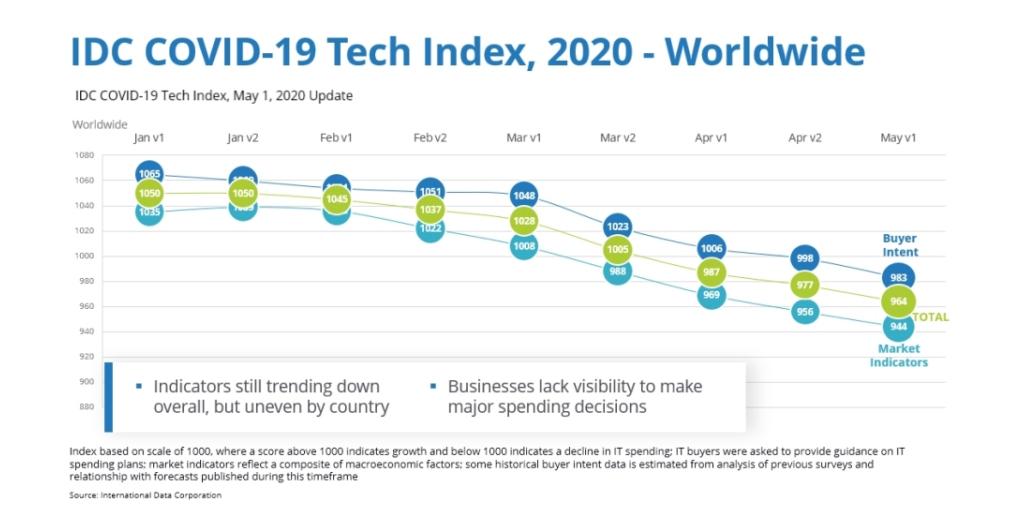SAN MATEO, Calif.--(BUSINESS WIRE)--With COVID-19 continuing to impact the global economy in its second year, the semiconductor market continues to experience uneven shortages and tight supply. The general theme for semiconductors in 2021 was shortages in mature process technology nodes. International Data Corporation (IDC) expects tight semiconductor supply to continue through the first half of 2022 as the industry builds up inventory to normal levels. New COVID-19 surges have slowed manufacturing, but the real concern will be labor shortages.
The automotive market continues to be impacted as chips move upstream, limiting automobile manufacturing and driving OEMs to utilize their semiconductor supply for higher value vehicles, which raised the average selling price of vehicles for 2021. "Automotive semiconductors will continue to be a limiting constraint on the automotive market through the first half of 2022, but barring any unforeseen shutdowns or semiconductor manufacturing issues, supply should gradually improve through the second half of the year," said Nina Turner, research manager with IDC's Enabling Technologies and Semiconductor team. "Adding in the time to manufacture the vehicle, this means the automotive market will begin to improve towards the end of 2022 and into 2023 if there are no other supply chain shocks."
One of the key supply constraints for the semiconductor market was in mature process nodes. While the automotive semiconductor market largely depends on these older processes, many other semiconductors are made on these mature manufacturing process technologies at 40nm and above, such as LCD drivers, power management ICs, power, Auto ICs, and microcontrollers. According to the IDC presentation, Semiconductor Manufacturing and Foundry Market Assessment (IDC #US48619221), and the forthcoming report, Semiconductor Manufacturing and Foundry Services Market and Technology Assessment (IDC #US48779222), IDC estimates that 67% of semiconductors were manufactured at mature process nodes in 2021. Utilizing largely depreciated assets, these semiconductors are sold at lower average selling prices (ASPs) compared to leading edge process nodes, defined as 16nm or below. IDC found that while leading edge manufacturing only makes up 15% of the semiconductor wafer volume, revenue from these semiconductors represents 44% of the total. This disparity helps explain the focus of capital spending on the leading edge for the foundry market and the limited investment in mature process technology manufacturing.
Another key finding outlined in the new report is the continued growth of fabless semiconductor revenues and the continued growth of foundry capacity in Asia/Pacific. "IDC forecasts fabless semiconductor revenues will grow from 41% of the market in 2020 to 49% in 2025, highlighting the sustainable growth of the foundry market," said Rudy Torrijos, research manager on IDC's Enabling Technologies and Semiconductor team. "Foundry capacity will continue to grow in Asia/Pacific. By 2025, South Korea and China will increase their wafer manufacturing share to 19% and 15%, from 16% and 12% respectively." Despite the growth in capacity in these countries, revenue share will continue to be stable in Taiwan, accounting for 68% of the foundry market in 2025, up slightly from 67% in 2020, largely due to the investment and success of TSMC and the other Taiwanese foundry service suppliers. The overall foundry market is forecast to grow at a five-year compound annual growth rate (CAGR) of 12% from 2020 to 2025.

While new fabs and investment announcements are a welcome sign for semiconductor manufacturing capacity over the next five years, this new capacity will not come online in 2022. Companies are slowly adding what capacity they can, but capacity improvement will be incremental this year and accelerate in 2023 and beyond.
"The shortages that began early last year have given way to sustainable ASP increases for most semiconductor suppliers this year, except in memory. Demand remains robust across most system markets but inventory levels by the middle of the year and slower economic activity in the second half could be what ultimately eases the constraints," said Mario Morales, group vice president, Enabling Technologies and Semiconductors at IDC. "OSAT and material shortages are the new challenge for the semiconductor supply chain, which will require investment over the next couple of years, especially as the ongoing trend toward systems in package accelerates."
The IDC Worldwide Semiconductor Technology Supply Chain Intelligence (STSI) service serves as the basis for IDC's semiconductor supply-side research, including our market forecasts and custom market models. The service includes foundry and automotive semiconductor coverage and revenue data collected from over 150 of the top semiconductor companies for 2015-2020 and forecasts for 2021-2025. Revenue for over twenty semiconductor device areas, five geographic regions, seven industry segments, and more than 60 end-device applications are included in the database and pivot tables. For more information about the STSI, please contact Nina Turner at nturner@idc.com.
Click here to learn about IDC's full suite of data products and how you can leverage them to grow your business.
About IDC
International Data Corporation (IDC) is the premier global provider of market intelligence, advisory services, and events for the information technology, telecommunications, and consumer technology markets. With more than 1,200 analysts worldwide, IDC offers global, regional, and local expertise on technology, IT benchmarking and sourcing, and industry opportunities and trends in over 110 countries. IDC's analysis and insight helps IT professionals, business executives, and the investment community to make fact-based technology decisions and to achieve their key business objectives. Founded in 1964, IDC is a wholly owned subsidiary of International Data Group (IDG), the world's leading tech media, data, and marketing services company. To learn more about IDC, please visit www.idc.com. Follow IDC on Twitter at @IDC and LinkedIn. Subscribe to the IDC Blog for industry news and insights.




